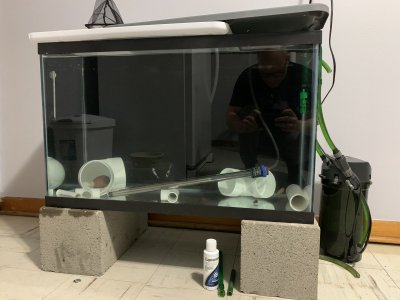- Joined
- Mar 12, 2019
- Messages
- 13
- Reaction score
- 17
Just noticed some tiny dots on my firefish and pink streaked wrasse. Wrasse was the last in on Dec 30th. No prior quarantine. Tail spot blenny has no visual symptoms. None are showing behavioral symptoms of velvet, and I don’t have the eyesight to tell the difference. Going to move forward with velvet protocol (but don’t have reef rally for second bath.) On my way now to get supplies. So, couple questions at this point.
-What do I need to match before dropping fish in? SG & temp?
- How do you deal with evaporation in the hospital tank?
- Should I do the reef rally dip in a couple of days when I’m able to get it?
Thanks peoples!
-What do I need to match before dropping fish in? SG & temp?
- How do you deal with evaporation in the hospital tank?
- Should I do the reef rally dip in a couple of days when I’m able to get it?
Thanks peoples!


















